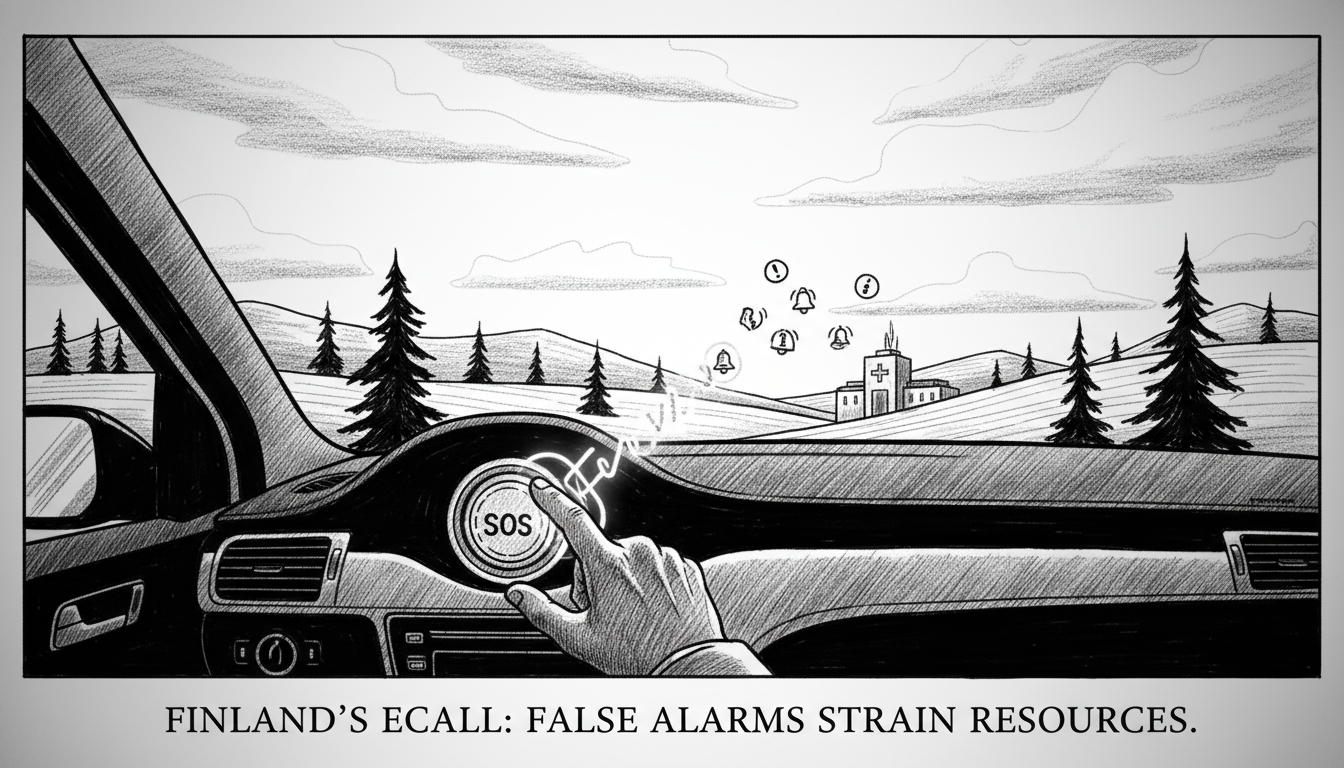A mandatory emergency call system in new vehicles generates thousands of unnecessary alerts to Finnish emergency centers each year. New data reveals the scale of accidental activations that strain emergency response resources across the Nordic country.
Last year, emergency centers received 5,555 automatic emergency calls through the eCall system. Only 10 percent of these calls involved actual accidents requiring assistance. The remaining 90 percent represented false alarms that diverted emergency resources.
Emergency Response Agency development manager Tommi Hopearuoho explained that 4,700 of these alerts resulted from manual activation by vehicle occupants. Some were accidental presses, while others stemmed from technical system errors.
Human curiosity represents the primary cause of unnecessary alerts, according to officials. Drivers often activate the emergency system while searching for interior light buttons or exploring their vehicle's controls. Hopearuoho noted that people naturally want to test different buttons in new cars, but safety features require proper understanding through owner's manuals.
All new passenger cars and vans type-approved after March 31, 2018 must contain eCall devices under European Union regulations. The system automatically transmits data to emergency services during accidents, including vehicle location, direction of travel, and vehicle characteristics. The technology also indicates whether alerts were triggered manually or automatically.
Despite the false alarm problem, the eCall system provides crucial benefits during genuine emergencies. The technology enables faster response times by immediately connecting crash victims with emergency operators and providing precise location data. The direct communication channel helps emergency services assess situations before dispatching resources, potentially reducing unnecessary responses.
Hopearuoho maintains that the system remains valuable despite the high number of accidental activations. He emphasized that during actual accident situations, the technology ensures appropriate assistance reaches victims as quickly as possible. The phone connection to vehicles helps eliminate unnecessary dispatches when additional situation information becomes available.
The eCall regulation represents part of broader European road safety initiatives. Similar systems operate across EU member states, though implementation challenges vary by country. Finnish authorities continue working on public education campaigns to reduce accidental activations while preserving the life-saving potential of the technology.
For international readers and expatriates in Finland, understanding this system becomes particularly important when purchasing or renting newer vehicles. The bright red SOS button typically located near the overhead console requires careful handling to prevent accidental emergency calls. Vehicle owners should familiarize themselves with their specific model's emergency call system through owner's manuals or dealership demonstrations.
The situation highlights the balance between automotive safety technology and practical implementation. While automated emergency systems offer clear safety advantages, their design must account for real-world human behavior and potential misuse. As vehicle technology continues advancing, similar challenges may emerge with other automated safety features.
What does this mean for Nordic road safety overall? The data suggests that while technology provides important safety nets, driver education remains equally crucial. The most advanced emergency systems cannot replace careful driving and proper familiarity with vehicle controls. Finnish authorities continue refining both the technology and public awareness to maximize safety benefits while minimizing false alarms.

